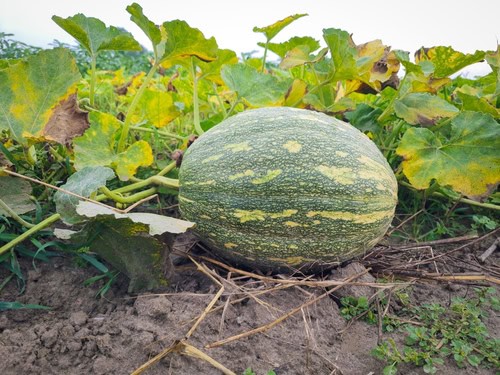Pumpkins are a popular crop for many gardeners, and for good reason. They’re versatile, delicious, and fun to grow. However, pumpkin plants are also susceptible to a variety of diseases, including powdery mildew.
One of the most common symptoms of powdery mildew on pumpkin plants is the appearance of white spots on the leaves. These spots can be alarming to gardeners, but fortunately, there are steps you can take to prevent and treat this fungal infection.
Understanding the causes of white spots on pumpkin leaves is the first step in preventing and treating this problem. Powdery mildew is a fungal disease that thrives in warm, humid conditions.
When conditions are right, the fungus can quickly spread throughout a pumpkin plant, causing white, powdery spots to appear on the leaves. Factors contributing to fungal growth include inadequate air circulation, overcrowding, and poor soil conditions.
Recognizing the symptoms of powdery mildew and taking steps to prevent and treat it is essential for healthy pumpkin plants.
In this article, we’ll explore the impact of fungal diseases on pumpkin plants, prevention strategies for fungal infections, treatment options for white spots, pruning and managing infected plants, and other pumpkin plant problems. We’ll also provide tips for growing pumpkins successfully and answer some frequently asked questions.
Key Takeaways on Pumpkin Leaves with White Spots
- Powdery mildew is a fungal disease that causes white spots to appear on pumpkin leaves.
- Factors contributing to fungal growth include inadequate air circulation, overcrowding, and poor soil conditions.
- Prevention and treatment strategies include proper plant spacing, good air circulation, and fungicides.
Also don’t miss:
- Plants Having Green Leaves with White Spots
- Orchid Leaves White Spots
- Why Does My Aloe Plant Have White Spots?
Understanding White Spots on Pumpkin Leaves
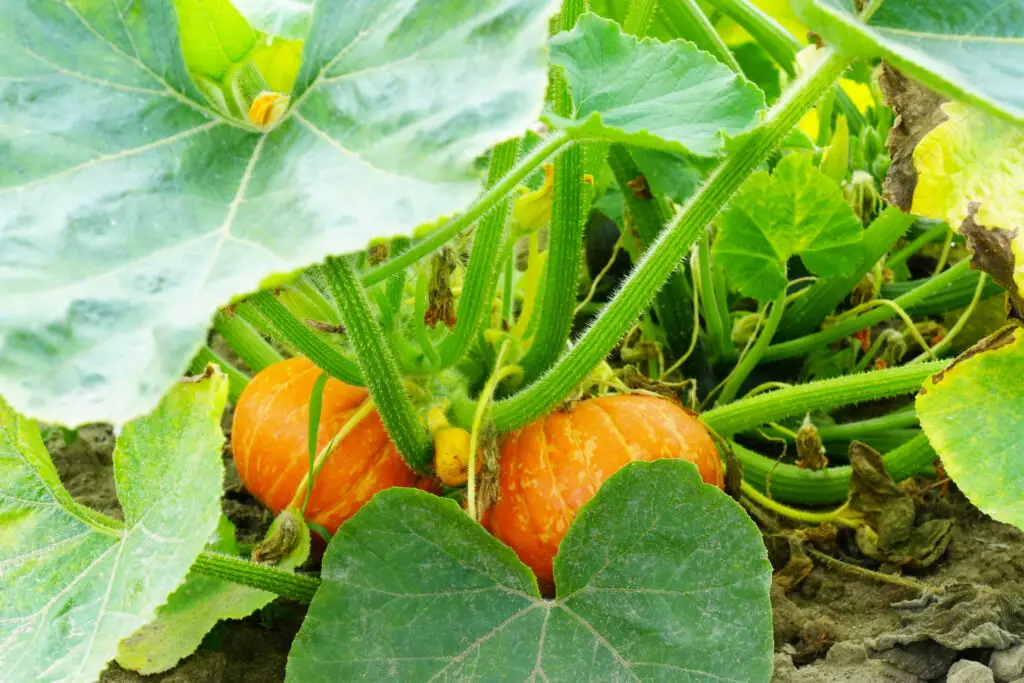
Pumpkin leaves turning white can be a sign of powdery mildew, a fungal disease caused by the spores of the Erysiphe cichoracearum fungus.
This disease is very common in pumpkins and other plants, especially in warm and humid conditions. If left untreated, it can seriously damage the plant by depriving it of water and nutrients, causing it to grow slower and bloom less.
The white spots on pumpkin leaves are a result of the powdery mildew fungus growing on the surface of the leaves. The fungus creates a white, powdery substance that covers the leaves and can spread to other parts of the plant.
This substance is made up of millions of spores that can easily be carried by the wind to other plants in the area.
Powdery mildew is not the only fungal disease that can cause white spots on pumpkin leaves. Downy mildew is another common disease that can cause similar symptoms. However, downy mildew usually appears as yellow spots on the leaves, while powdery mildew is characterized by white spots.
Preventing powdery mildew is the best way to avoid white spots on pumpkin leaves. Proper plant care, including watering and fertilizing, can help keep the plant healthy and less susceptible to disease.
Additionally, reducing humidity and increasing air circulation around the plant can help prevent the growth and spread of powdery mildew.
If white spots do appear on pumpkin leaves, there are several treatments that can help control the disease. Fungicides, such as sulfur or copper-based products, can be applied to the leaves to kill the fungus.
However, it is important to follow the instructions carefully and not overuse these products, as they can be harmful to the plant and the environment.
Recognizing Powdery Mildew
Powdery mildew is a fungal disease that affects many plants, including pumpkin leaves. It appears as white or grayish spots on the upper surface of leaves, and can spread quickly if left untreated.
The spots caused by powdery mildew are often angular in shape and can cover large areas of the leaves. The fungal spores that cause powdery mildew are spread by wind and can survive on plant debris throughout the winter, making it a persistent problem for gardeners.
One way to distinguish powdery mildew from other fungal diseases, such as white mold, is by the appearance of the spots. Powdery mildew spots are dry and powdery to the touch, while white mold spots are wet and slimy.
It is important to recognize powdery mildew early on, as it can reduce the yield of pumpkins and affect the growth time of the plant. In severe cases, it can even lead to pumpkins with little flavor.
To prevent the spread of powdery mildew, it is important to remove infected leaves as soon as possible. Gardeners can also take preventative measures, such as planting resistant varieties of pumpkins and avoiding overhead watering.
Factors Contributing to Fungal Growth
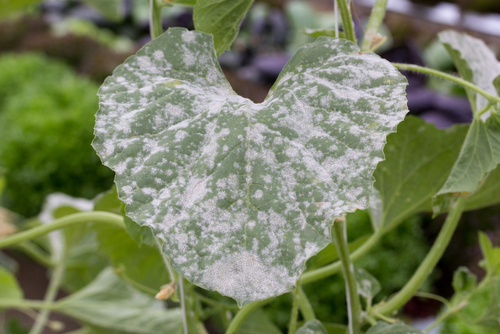
Pumpkin leaves with white spots are often caused by a fungal disease called powdery mildew. Several factors can contribute to the growth and spread of this fungus.
1. Humidity and Temperature
Powdery mildew thrives in cool and humid conditions. High humidity, especially during the night, can provide the ideal environment for the fungus to grow. In addition, temperatures between 60 to 80 degrees Fahrenheit are optimal for its development.
2. Light
Powdery mildew can grow in both sunlight and shade. However, shaded areas with poor air circulation can create a damp environment that encourages fungal growth.
3. Water
Overwatering can lead to the development of powdery mildew. Excess water on the leaves can create a moist environment that is conducive to fungal growth. Additionally, water droplets on the leaves can act as a magnifying glass, intensifying the sun’s rays and burning the leaves.
4. Prevention
To prevent the growth and spread of powdery mildew, it is important to control the factors that contribute to its development. This can be done by:
- Providing good air circulation around the plant
- Watering the plant at the base, avoiding getting water on the leaves
- Removing any infected leaves immediately
- Avoiding overcrowding of plants
- Applying fungicides as necessary
Impact of Fungal Diseases on Pumpkin Plants

Pumpkin plants are susceptible to a variety of fungal diseases, including powdery mildew, downy mildew, and black rot. These diseases can have a significant impact on the growth and yield of the plant.
One of the most common fungal diseases affecting pumpkin plants is powdery mildew. This disease is characterized by the appearance of white spots on the foliage of the plant.
As the disease progresses, the spots can merge and cover the entire leaf surface. This can lead to reduced photosynthesis, which in turn can result in reduced yield and smaller fruit size.
In addition to reducing yield, fungal diseases can also affect the growth time of pumpkin plants. Infected plants may take longer to reach maturity, which can delay the harvest and reduce the overall productivity of the crop.
Young plants and vines are particularly susceptible to fungal diseases, as their foliage is more delicate and less resistant to infection. Once a fungal disease takes hold, it can quickly spread to other parts of the plant and even to neighboring plants.
Cucurbits, including pumpkins, are common hosts for fungal diseases, which can be spread through soil, water, and air. Proper crop rotation and good sanitation practices can help reduce the risk of infection.
Prevention Strategies for Fungal Infections
Preventing fungal infections in pumpkin plants is key to maintaining healthy leaves and fruits. Here are some strategies that can help reduce the risk of fungal infections in pumpkin plants:
1. Planting
Planting pumpkin plants in well-drained soil with good air circulation can help prevent fungal infections. It is recommended to space the plants at least 2-3 feet apart to allow for good air circulation.
2. Full Sun
Pumpkin plants need full sun to thrive. Planting them in a location that receives at least 6-8 hours of direct sunlight can help reduce the risk of fungal infections.
3. Fertilizer

Using a slow-release fertilizer can help prevent fungal infections in pumpkin plants. It is important not to overfertilize the plants, especially with nitrogen-rich fertilizers, as this can make them more susceptible to fungal infections.
4. Trellis
Growing pumpkin plants on a trellis can help improve air circulation and reduce the risk of fungal infections. This also keeps the fruits off the ground, reducing the risk of rot and other diseases.
5. Inspect
Inspecting pumpkin plants regularly for signs of fungal infections can help prevent the spread of the disease. If any infected leaves or fruits are found, they should be removed and discarded immediately.
Treatment Options for White Spots
When it comes to treating white spots on pumpkin leaves, there are several options available. The most effective treatment method depends on the severity of the infection and the underlying cause.
1. Fungicides
Fungicides are chemical treatments that can be used to kill powdery mildew fungi. However, they should be used with caution as they can harm beneficial insects and pollinators. It is important to follow the instructions on the label and wear protective clothing when using fungicides.
2. Neem Oil
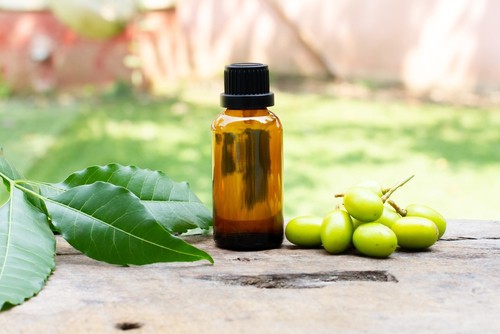
Neem oil is an organic treatment that is effective against powdery mildew. It works by disrupting the fungal cell membrane, preventing the growth and spread of the fungus. Neem oil can be applied directly to the affected leaves using a spray bottle.
3. Horticultural Oil
Horticultural oils, such as jojoba oil, can also be used to treat powdery mildew. These oils work by suffocating the fungus, preventing it from spreading. Horticultural oils should be applied to the leaves in the early morning or late evening when the temperature is cool.
4. Baking Soda and Milk
A mixture of baking soda and milk can be used as a natural fungicide to treat powdery mildew. The baking soda disrupts the fungal cell membrane, while the milk provides a protective coating on the leaves.
To make the mixture, combine one tablespoon of baking soda and one cup of milk in a spray bottle and shake well. Spray the mixture onto the affected leaves once a week.
5. Potassium Bicarbonate
Potassium bicarbonate is a natural fungicide that can be used to treat powdery mildew. It works by altering the pH of the leaf surface, making it less hospitable to the fungus. Potassium bicarbonate can be applied directly to the affected leaves using a spray bottle.
6. Biological Fungicides
Biological fungicides, such as Serenade, contain live microorganisms that can be used to treat powdery mildew. These microorganisms compete with the fungus for nutrients, preventing it from growing and spreading.
Biological fungicides should be applied to the leaves in the early morning or late evening when the temperature is cool.
Pruning and Managing Infected Plants
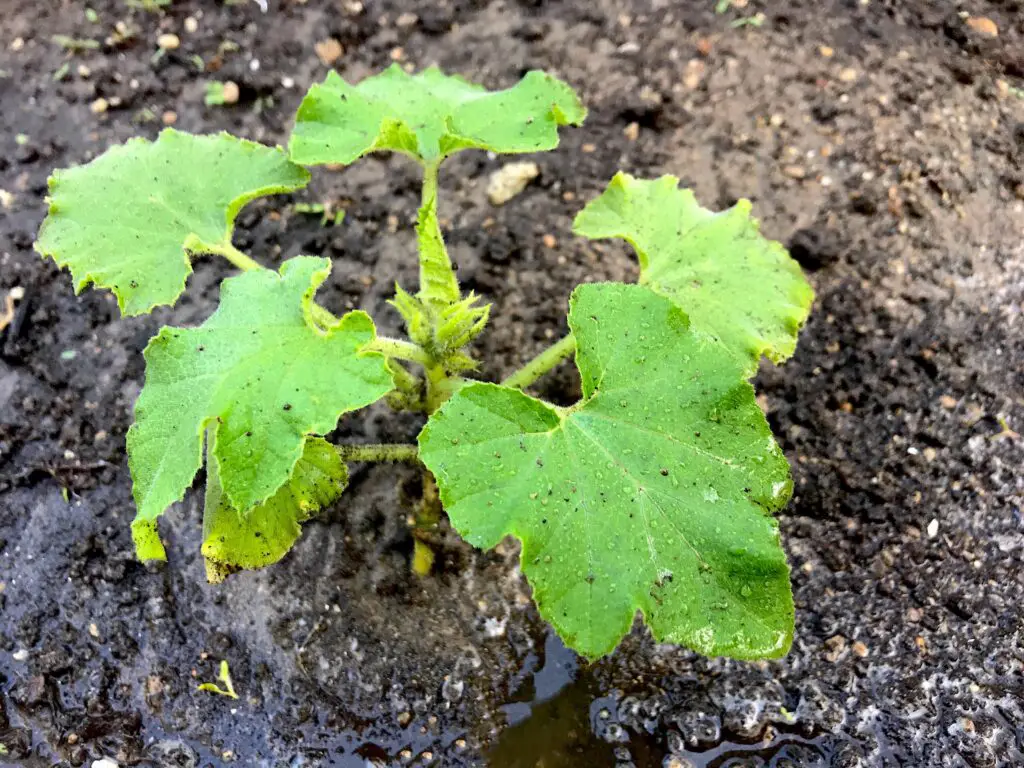
When pumpkin leaves become infected with powdery mildew, it is important to take action to prevent the spread of the disease. Pruning is a key part of managing infected plants, as it helps to remove infected leaves and prevent the spread of the fungus.
To prune an infected pumpkin plant, start by removing any leaves that are showing signs of white spots or powdery mildew. Use clean pruning shears to make clean cuts, and be sure to sterilize the shears between cuts to prevent the spread of the disease.
Once the infected leaves have been removed, it is important to dispose of them properly. Do not compost them, as this can cause the fungus to spread. Instead, place the infected leaves in a plastic bag and dispose of them in the trash.
In addition to pruning, there are other steps that can be taken to manage infected plants. These include:
- Reducing humidity: Powdery mildew thrives in humid conditions, so reducing humidity levels can help to slow the spread of the disease. This can be done by providing good air circulation around the plants, and by avoiding overhead watering.
- Applying fungicides: There are a variety of fungicides that can be used to treat powdery mildew. These should be applied according to the manufacturer’s instructions, and may need to be reapplied several times throughout the growing season.
- Choosing resistant varieties: Some pumpkin varieties are more resistant to powdery mildew than others. When selecting seeds or seedlings, look for varieties that are labeled as resistant to powdery mildew.
Other Pumpkin Plant Problems
Aside from powdery mildew, pumpkin plants may face other issues that can affect their growth and productivity. Here are some common pumpkin plant problems:
Sunburn and Sunscald
Pumpkin plants need a lot of sunlight to grow, but too much direct sunlight can cause sunburn and sunscald. Sunburn appears as white or yellow patches on the leaves, while sunscald affects the fruit and causes it to turn white or yellow.
To prevent sunburn and sunscald, it is recommended to provide some shade for the plants during the hottest part of the day.
Overwatering
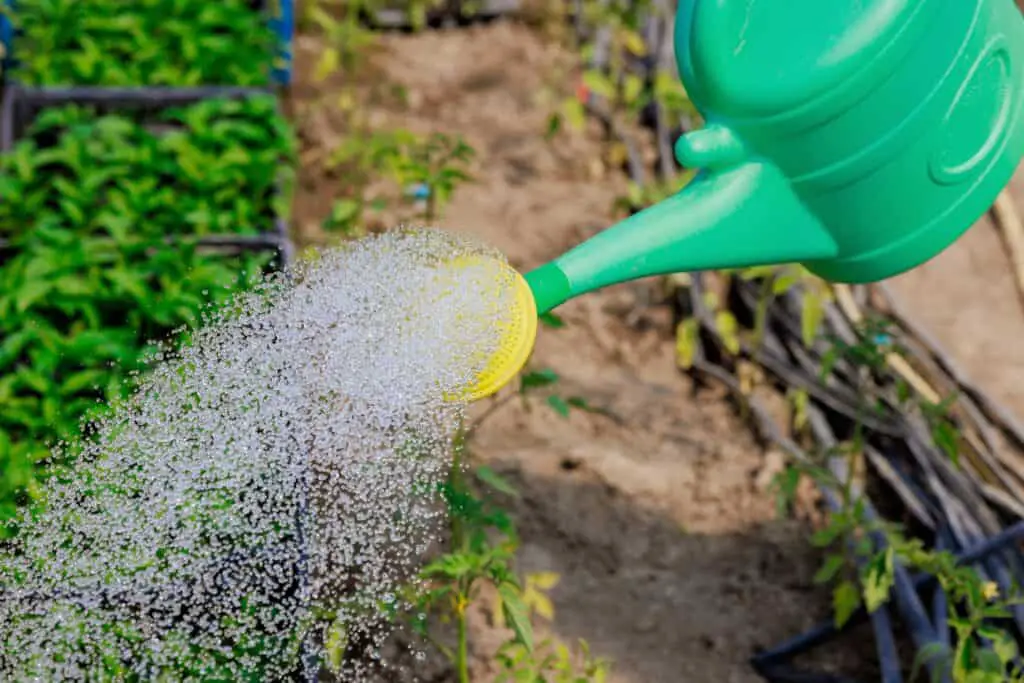
While pumpkin plants need regular watering, overwatering can lead to root rot and other problems. Signs of overwatering include yellow leaves, wilting, and stunted growth. To avoid overwatering, make sure the soil is well-draining and water the plants deeply but infrequently.
Over-fertilization
Too much fertilizer can also harm pumpkin plants. Over-fertilization can cause leaf burn, stunted growth, and poor fruit development. It is important to follow the recommended dosage and schedule for fertilizing pumpkin plants.
Other Problems
Pumpkin plants may also face other problems such as pests, diseases, and nutrient deficiencies. Some common pests that attack pumpkin plants include squash bugs, cucumber beetles, and vine borers.
Diseases such as downy mildew and bacterial wilt can also affect pumpkin plants. Nutrient deficiencies can cause yellowing leaves, poor growth, and reduced fruit production. It is important to identify the specific problem and take appropriate measures to treat it.
Growing Pumpkins Successfully
Growing pumpkins successfully requires planning and attention to detail. Pumpkins need a lot of space and sunlight to thrive. It is recommended to plant them in an area with at least 6 hours of direct sunlight per day and plenty of room to grow. Good airflow is also important to prevent the spread of diseases.
When planning to grow pumpkins, it is important to consider the timing. Pumpkins are a warm-weather crop and should be planted after the last frost in the spring. They typically take around 90-120 days to mature, so planting in early summer is ideal.
Pumpkins can be grown alongside other crops such as lettuce, dahlias, sunflowers, zucchini, and cucumbers. However, it is important to give pumpkins enough space to grow and avoid overcrowding. Overcrowding can lead to poor airflow and increase the risk of disease.
One common issue that pumpkin growers face is powdery mildew, which appears as white spots on the leaves. Powdery mildew can be prevented by ensuring good airflow and avoiding overhead watering.
If powdery mildew does appear, it can be treated with fungicides or homemade remedies such as a mixture of baking soda and water.
Frequently Asked Questions
What causes white spots on squash leaves?
White spots on squash leaves are typically caused by powdery mildew, a fungal disease that thrives in warm and humid conditions. The fungus appears as white or light gray spots on leaves, stems, flowers, and fruit. It is spread by wind, rain, and contaminated tools and clothing.
How to prevent white powdery mildew on pumpkin leaves?
To prevent white powdery mildew on pumpkin leaves, make sure to plant in well-draining soil and provide adequate spacing between plants to promote air circulation.
Water at the base of the plant and try to avoid getting the leaves wet. Remove any infected leaves as soon as possible and dispose of them in the trash, not the compost pile.
What are the symptoms of pumpkin powdery mildew?
Symptoms of pumpkin powdery mildew include white or light gray spots on leaves, stems, flowers, and fruit. As the disease progresses, the spots may become larger and coalesce, covering entire leaves and reducing photosynthesis, which can stunt growth and reduce yield.
How to treat white spots on pumpkin leaves?
To treat white spots on pumpkin leaves, remove any infected leaves as soon as possible and dispose of them in the trash, not the compost pile. Spray the remaining leaves with a fungicide containing potassium bicarbonate, neem oil, or sulfur. Repeat every 7-10 days or as directed on the label.
What are the best ways to get rid of white mold on pumpkins?
To get rid of white mold on pumpkins, remove any infected plant material as soon as possible and dispose of it in the trash, not the compost pile.
Spray the remaining plant material with a fungicide containing potassium bicarbonate, neem oil, or sulfur. Repeat every 7-10 days or as directed on the label. Make sure to keep the area around the plants clean and free of debris.
What are the most effective treatments for pumpkin powdery mildew?
The most effective treatments for pumpkin powdery mildew include removing infected leaves, spraying with a fungicide containing potassium bicarbonate, neem oil, or sulfur, and providing adequate air circulation and spacing between plants.
In severe cases, it may be necessary to apply a systemic fungicide or switch to a resistant variety.

Hey, I’m Lisa and I’ve been an avid gardener for over 30 years. I love writing, talking and living in the garden! Feel free to connect with me on my socials below

